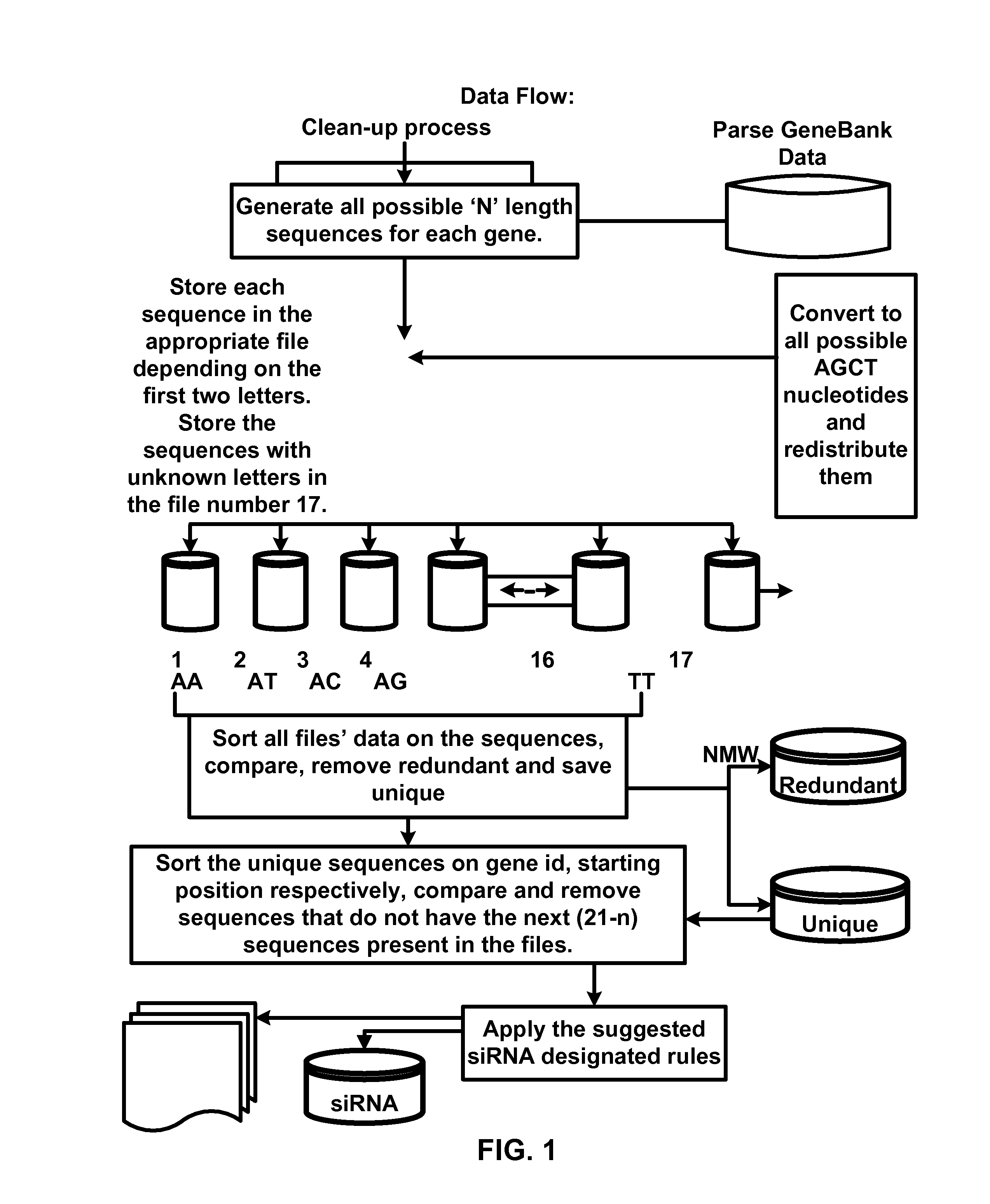Method of identifying unique target sequence
a target sequence and sequence technology, applied in chemical methods analysis, instruments, organic chemistry, etc., can solve the problems of loss of some significant matches in low complexity or very short sequences/matches/motifs, slowest method, and less adequa
- Summary
- Abstract
- Description
- Claims
- Application Information
AI Technical Summary
Benefits of technology
Problems solved by technology
Method used
Image
Examples
examples
[0038]We have developed a new algorithm that allows one to map all unique short-string sequences further we called “the target” with lengths (N)=9, 10, . . . , 15 nt in size within large sets of sequences, e.g. a set of all known Mouse genes. The algorithm assures the uniqueness of the “target” in the non-redundant set of the murine mRNAs. The “target” will be considered wnique if no other gene contains an identical short-string sequence to it; otherwise all the identical short-string sequences including primary target will be rejected. The candidate antisense strand of siRNA is formed by concatenating the unique target with its suffix of length equal to (21−N). All candidate siRNA antisense sequences are referred to by sense strand, starting at position 1 at 5′ end, which corresponds to position 21 of the antisense strand. Our efficient software avoids off-target gene silencing to numerate potential cross-hybridization candidates that the widely used BLAST search may overlook. Our ...
PUM
| Property | Measurement | Unit |
|---|---|---|
| L-length | aaaaa | aaaaa |
| N-length | aaaaa | aaaaa |
| length | aaaaa | aaaaa |
Abstract
Description
Claims
Application Information
 Login to View More
Login to View More - R&D
- Intellectual Property
- Life Sciences
- Materials
- Tech Scout
- Unparalleled Data Quality
- Higher Quality Content
- 60% Fewer Hallucinations
Browse by: Latest US Patents, China's latest patents, Technical Efficacy Thesaurus, Application Domain, Technology Topic, Popular Technical Reports.
© 2025 PatSnap. All rights reserved.Legal|Privacy policy|Modern Slavery Act Transparency Statement|Sitemap|About US| Contact US: help@patsnap.com

